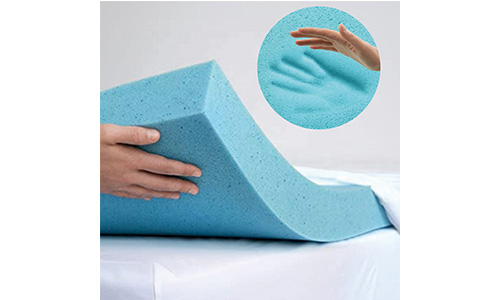Polyurethane is a polymer – a material comprising recurring units of compounds. An example of a natural polymer is cellulose, which is found in the cell walls of most plants. Polyurethane is a thermosetting plastic; when it’s cured, a cross-linked polymer network is created, resulting in a strong, durable material.
Within the structure of foam, there are thousands of gas pockets, or pores, ranging in size from 10 pores per linear inch (PPI), meaning that each pore has a diameter of 0.1in (2.54mm), to 150 PPI, making each pore just 0.007in (0.178mm) across.
The suitability of a foam for a particular purpose depends largely on the size and structure of its pores, or ‘cells’.
Closed-cell foam is foam that has tiny, discrete pockets of gas – each one totally enclosed within polymer walls. It is made by incorporating a blowing agent into the chemical reaction between liquid polymers used to make polyurethane. The material hardens, and the result is a strong close cell with a density of up to 800kg/m3 – ideal for insulation.
High-density, closed-cell foam will last for many years. As cavity-wall insulation, the longevity of this material can equal that of the building.
As an alternative to pre-formed foam slabs, insulation can be installed in the form of high-density expanding foam, which is applied in liquid form via a hand-held applicator-gun. The insulating properties of expanding foam (or ‘spray foam’) are exceptional, as the liquid polyurethane works its way into every crevice, foaming in reaction with the blowing agent. However, this super-efficient product can lead to restricted ventilation, which, in turn, can cause condensation and associated problems, like mould.
Open-cell foam is made by introducing variations in the blowing agent when making polyurethane. Reactions cause pockets of gas to expand and ‘open’. Even if only half of a foam’s pores are open, it’s still classed as open-cell foam to distinguish it from the tough, impervious, more expensive closed-cell foam.
One of the polymer composites of polyurethane is a diisocyanate, which reacts with water to form carbon dioxide. So, in the manufacture of a softer, open-cell polyurethane foam, water is added for the production of carbon dioxide gas.
With a density of around 15kg/m3 to 150kg/m3, this more forgiving type of foam is used in furniture and vehicle upholstery, mattresses, cleaning packaging. Open-cell foam is also used as insulation where a bit of air flow is desirable.

Closed-cell foam is mostly used for keeping stuff out – for example, as a barrier to moisture, heat, and sound. In contrast, open-cell foam is better for absorption.
Most of the world’s refrigerators and freezers are insulated by closed-pore polyurethane, and in the construction industry, this kind of foam is installed in cavity walls; it even contributes to the stability and load-bearing strength of a wall.
Open-cell reticulated foam performs well as a filter in aquaria, humidity pad or dust filter in air conditioners and oil filter in motor engines. Open-cell foam is also good at absorbing sound, improving acoustics in environments where echo is a problem. And it also makes a nice soft bath sponge!
 Cellulose Sponge is The best makeup product for Skin
Cellulose Sponge is The best makeup product for Skin
 Compressed Sponge and its application
Compressed Sponge and its application
 Memory Foam
Memory Foam
 Filter sponge and its application
Filter sponge and its application